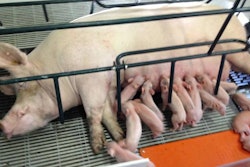USPOULTRY and the USPOULTRY Foundation announce the completion of a funded research project at the University of Delaware in Newark, Delaware, in which researchers found a new understanding of infectious laryngotracheitis (ILT) vaccines. The research is part of the Association’s comprehensive research program encompassing all phases of poultry and egg production and processing. A brief summary of the completed project is shown below. A complete report, along with information on other Association research, may be obtained by going to USPOULTRY’s website, www.uspoultry.org. The project summary is as follows.
Project #692: Modified Live Vaccines of Infectious Laryngotracheitis Virus
(Dr. Calvin L. Keeler, Jr., University of Delaware, Newark, Delaware)
In a recently completed research project, Dr. Calvin Keeler at the University of Delaware studied the virus subpopulations in an infectious laryngotracheitis (ILT) chicken-embryo-origin (CEO) vaccine to try to understand why these types of vaccines can appear to cause disease in some vaccinated flocks. He found that the nonpathogenic subpopulations located within CEO ILT vaccine spread poorly in chickens, which likely allows the more virulent subpopulations in the vaccine to spread and cause signs of the disease.
The research summary can be found on the USPOULTRY website. Information on other Association research may also be obtained by visiting the USPOULTRY website, www.uspoultry.org.
















